What is DNA?
In 1953, two biochemists, James Watson and Francis Crick, walked into a pub in Cambridge and declared: “We have discovered the secret of life!”
They weren’t exaggerating. They had worked out the structure of DNA, and with it, unlocked many of the mysteries of how living things make and replicate themselves.
DNA, or to use its full name, deoxyribonucleic acid, is found at the heart of every cell of every living thing. It carries all of the instructions for an organism to build, maintain and repair itself. By replicating and passing on their DNA, animals, plants and microorganisms can impart their characteristics to their offspring.
In humans, half the DNA in our cells stems from our mother, and half from our father. This is why we inherit a mixture of characteristics from both parents.
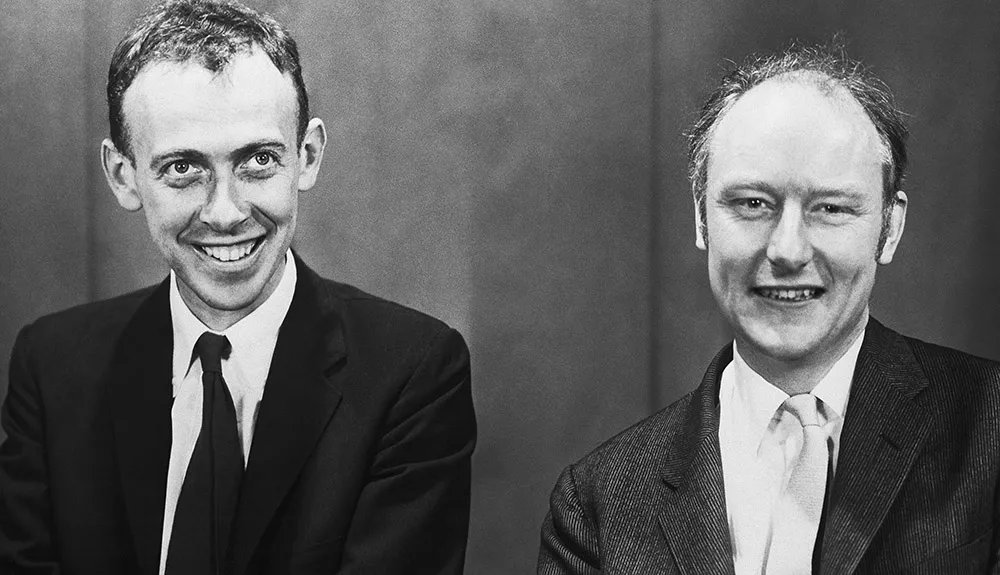
DNA is a hugely long and complex code, and everyone’s is unique. This ‘genetic code’ can tell us many things, including details about ancestry and potential health problems.
Our understanding of DNA has revolutionised the whole of biology. It has allowed scientists to measure how closely organisms are related to one other, helping to both confirm and refine Charles Darwin’s theory of evolution.
How does DNA work?
Establishing the structure of the DNA molecule was key to figuring out how it worked. Before that, scientists had no idea how this dense, stringy substance controlled qualities as diverse as human hair colour, or the shape of a bird’s beak.
Jargon Buster
Base pairs
DNA consists of building blocks called nucleotides. There are four different types and each is assigned a letter: A, C, G or T. A always links with T and C always links with G. When connected, these form the base pairs.
DNA sequencing
This is an important technique in biology that allows us to ‘read’ the sequence of nucleotides.
Gene
A section of DNA that has a particular function. Genes rarely do just one thing and often it is the combination of many genes that result in a physical characteristic like eye colour or height. You inherit genes from both your mother and your father.
Genome
This entire DNA sequence of an organism. The human genome was sequenced in 2003. Everyone’s genome is unique, but we can tell how closely related we are by studying similarities between genomes.
Watson and Crick found that a DNA molecule is arranged like a very long, twisted ladder in a structure we call a double helix. Each ‘rung’ of the ladder is made up of a base pair – two joined chemical building blocks called nucleotides. There are four different types of these nucleotides: adenine, cytosine, guanine and thymine.
We call these A, C, G and T. An A nucleotide always links to a T, while a C always links to a G. The exact order that the letters are arranged on the ladder varies, forming an enormously long code. Human DNA has about three billion ‘rungs on the ladder’.
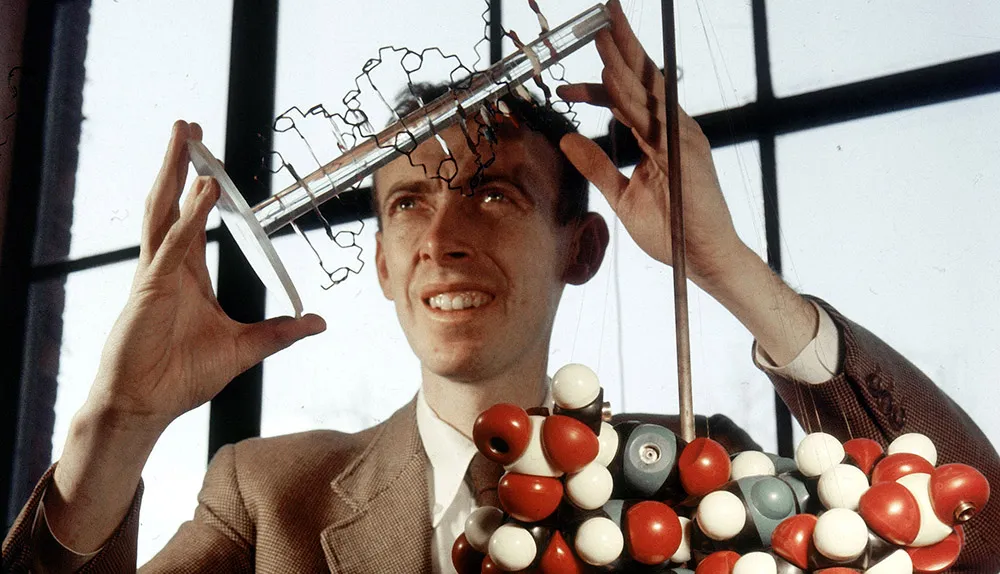
With modern technology we can extract DNA from cells and decipher the exact order of the base pairs, giving us an extraordinarily long string of letters A, C, T and G. This complex code will be different for every person and every organism (apart from identical twins), and is known as our DNA sequence or genome.
To understand how DNA works, we must first understand proteins. Protein molecules perform many of the different tasks inside our cells, and help create many of the intricate structures within the body.
There are many different types of protein, but they are all made from long chains of chemical building blocks called amino acids.
The genetic code formed by DNA is like a language, which tells cells how to build the proteins they need. Different three-letter combinations in the DNA represent different types of amino acid – for example, the sequence ‘GCA’ is the code for an amino acid called alanine, and ‘TGT’ represents one called cysteine.
Molecular machinery within the cell ‘scans’ the DNA sequence of a gene. Every three letters, it adds the corresponding amino acid to a chain. There are even sections of DNA that mean ‘stop’ – the protein is finished.
Different combinations of amino acids create proteins with vastly different functions – from tiny chemical messengers like hormones to the tough, important molecules that form hair, skin and muscle. Proteins can also act as catalysts for important chemical reactions, or can create mini-machines that perform very specific tasks within cells.
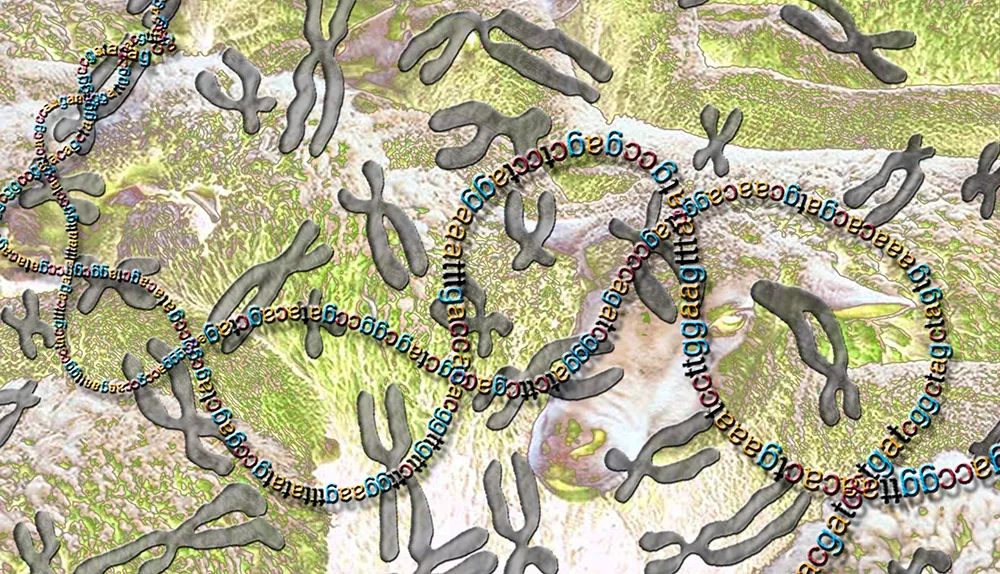
There are hundreds of thousands of different proteins in the human body and many, many millions more throughout the natural world. Variation in our genes causes variation in the proteins our cells produce, which in turn leads to differences in characteristics.
What are genes?
Genes are sections of our DNA sequence that contain the code for a specific protein, normally linked to a specific function or physical characteristic. In humans, for example, a stretch of DNA known as ‘OCA2’ has a strong influence on a person’s eye colour.
Variations in these parts of our DNA lead to the different characteristics we see among individuals. For example, people with blue eyes have different DNA at ‘OCA2’ than people with brown eyes.
Read more about genetics:
- Viruses: their extraordinary role in shaping human evolution
- Growing up poor can affect your DNA as well as your health
- Who really discovered DNA?
- Epigenetics - bridging the gap between nature and nurture
A common misconception about genes is that one gene is responsible for one trait, which is actually highly unusual. More commonly, physical traits result from a combination of many genes. Scientists can study what a gene does by removing it or changing the sequence of base pairs, normally using animals like fruit flies, worms or mice.
These ‘mutant’ animals are then studied to see what is different about them.
How does DNA replicate?
The discovery of DNA’s ‘double helix’ structure helped reveal the beautifully simple way a DNA molecule replicates itself. With the help of other chemicals in the cell, the double helix untwists and the two strands split down the middle, like a zip.
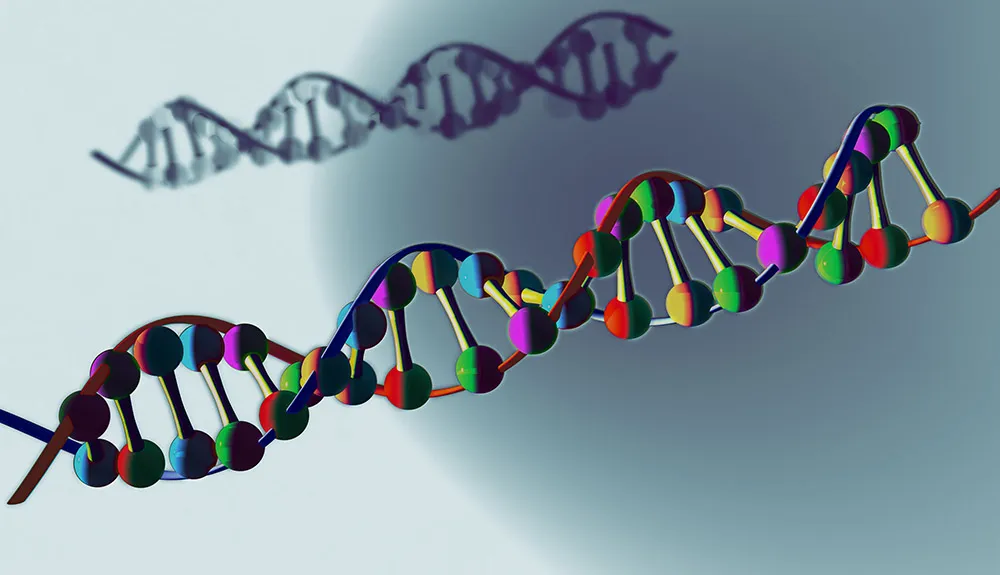
Because A always pairs with T, and C with G, both strands then form an exact copy as more nucleotides are attracted into the corresponding place opposite the freshly split strands.
This replication process is crucially important, because cells are constantly dividing and replicating. If DNA is copied incorrectly, the resulting cells have jumbled instructions and can start growing out of control. This is often how a cancerous tumour starts.
What are chromosomes?
In animals and plants, the amount of DNA in each cell is so vast that it must be cleverly packaged into x-shaped bundles called chromosomes.
These structures coil and fold the DNA so it doesn’t take up too much room, while still allowing the cell to access all the important parts of the code.
If it weren’t wrapped up in chromosomes, scientists think the DNA in one human cell could stretch for more than 1.5m.
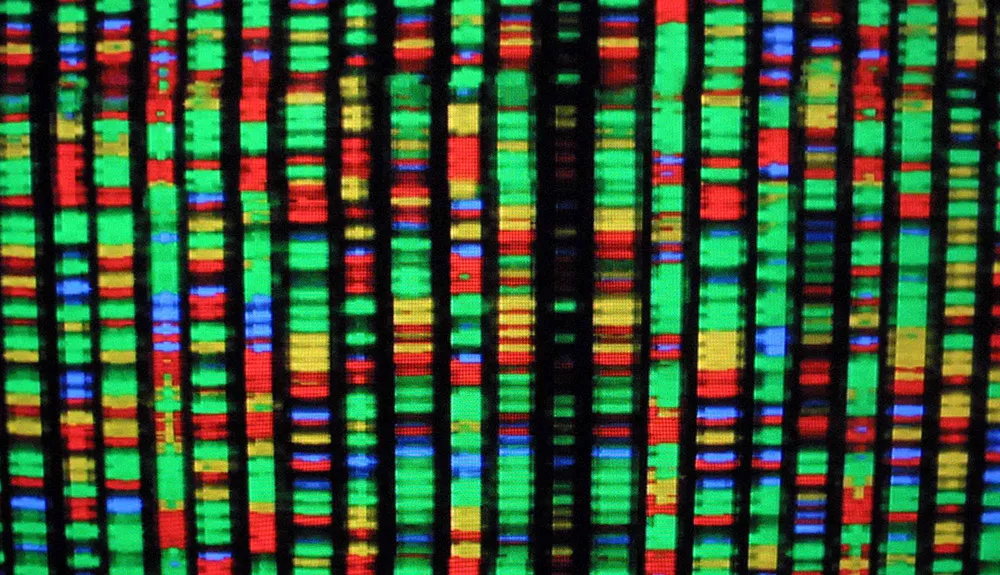
In humans, our entire genetic code is spread across 23 chromosomes. We each inherit one set of 23 from our mum, and another set of 23 from our dad, so each cell contains 46 chromosomes. When people are born with too many or too few chromosomes, it can cause health issues.
For instance, people with Down’s syndrome have three lots of chromosome 21 instead of a pair.
The sex chromosomes are a little different. One is called X and one is called Y. Males have one copy of each, X and Y, whereas females have two copies of X.
When a sperm fuses with an egg, the new cell gets one of every chromosome from each parent. So it will have 23 pairs or 46 chromosomes, with either two X chromosomes (female) or one X and one Y (male).
DNA explained in five quick points
Your DNA is unique
DNA is a very long molecule that contains the instructions for living things to build and maintain themselves. All organisms have their own unique strands of DNA in each cell, which forms a very long code known as their genome.
Cells read the genes
Certain stretches of an organism’s genome do certain things. These sections are called genes. Each cell can ‘read’ the code written in the genes and use it to build all the chemicals it needs.
DNA exists in chromosomes
Within each cell, DNA is kept in packages called chromosomes. We inherit 23 chromosomes from our mother and 23 from our father. Which ones our parents pass on to us determines many things, including what we look like, what diseases we are likely to get and even some aspects of our personality and behaviour.
Genetic disorder
A problem caused by one or more abnormalities in a person’s genome, normally present from birth. Most genetic disorders are quite rare.
Genetic modification
Changing the DNA of an organism so that it has different properties. One example would be inserting a gene from one crop into another to make it resistant to pests.
Different organisms have different numbers of genes and chromosomes in their cells. Mosquitoes have just six chromosomes, while a type of fern known as ‘adder’s tongue’ has over 1,000 – though no one really knows why it needs that many.
Do our genes determine everything about us?
Scientists and philosophers have argued for centuries about whether our lives are controlled by nature or nurture.
The simplest way to answer this question is to say that we are a product of a combination of our inherited genes and our environment.
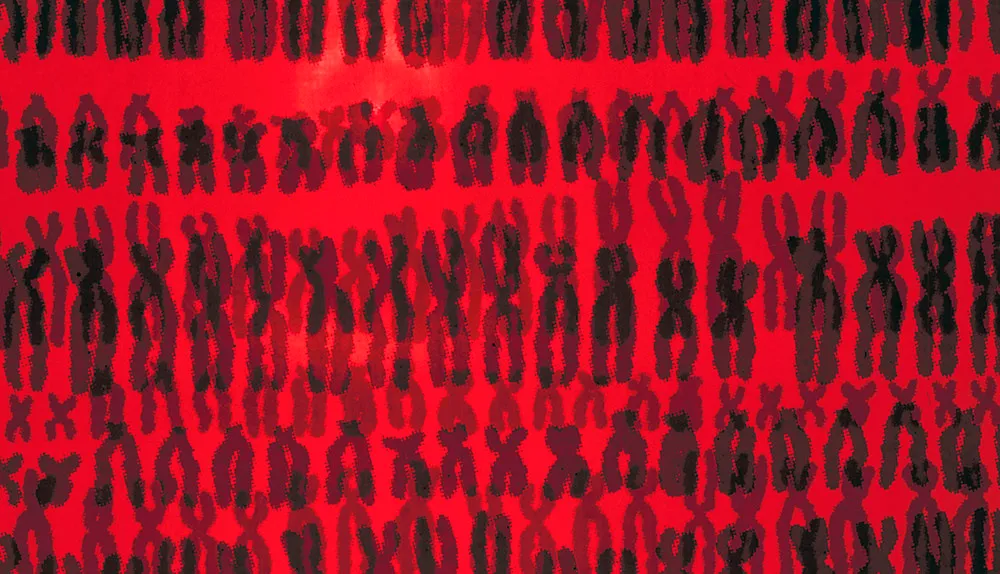
A small number of genes have been linked to certain character traits, such as high intelligence or extreme anti-social behaviour, but the evidence is limited. It is more likely that lots of genes work in combination to influence our personality, and the experiences and events of our lives also shape the way our brains work.
Although every person’s DNA sequence is unique, huge sections of it are identical between people and even animals. In fact, about 95 per cent of our genome is the same as a chimpanzee’s, while 25 per cent is the same as a grape’s.
The amount of genetic variation between individual people is very small – just 0.1 per cent of the three billion base pairs will be different if you compare two people. Yet this variation gives rise to seemingly infinite appearances.
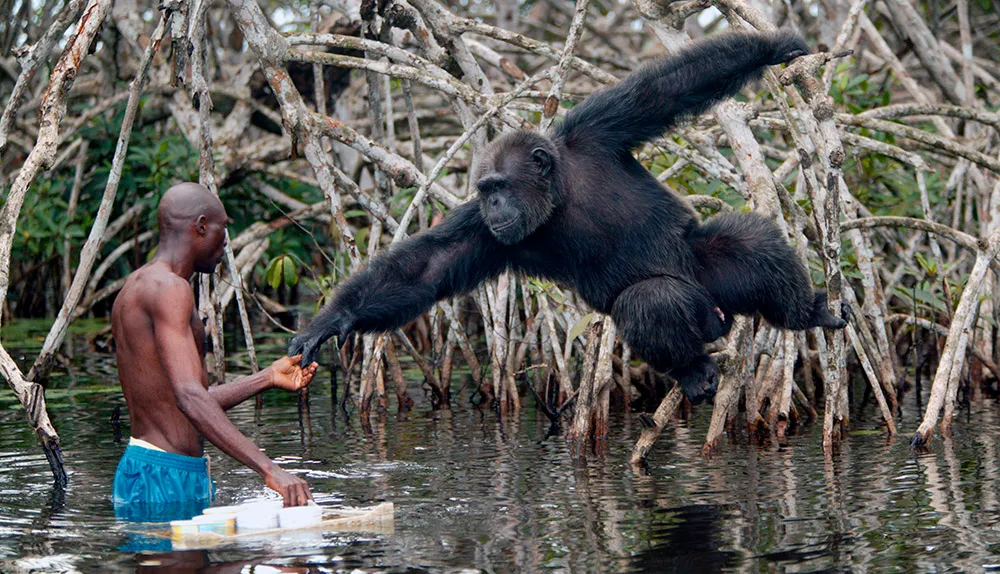
To complicate matters further, the relatively new field of ‘epigenetics’ is increasingly showing that our genes can be expressed differently – turned on and off – at different times throughout our lives, meaning the way our genes work is even more complex than we first thought.
Does DNA determine evolution?
The fact that DNA can replicate itself is central to the evolution of all life on Earth. When early organisms replicated themselves, imperfections in the DNA copying process created new life with variations in their genetic code – leading to slightly different characteristics and features in each generation.
Any characteristics that gave an advantage to the organism were more likely to survive and be passed on. Organisms that were hindered by their variations would be more likely to die or not reproduce.
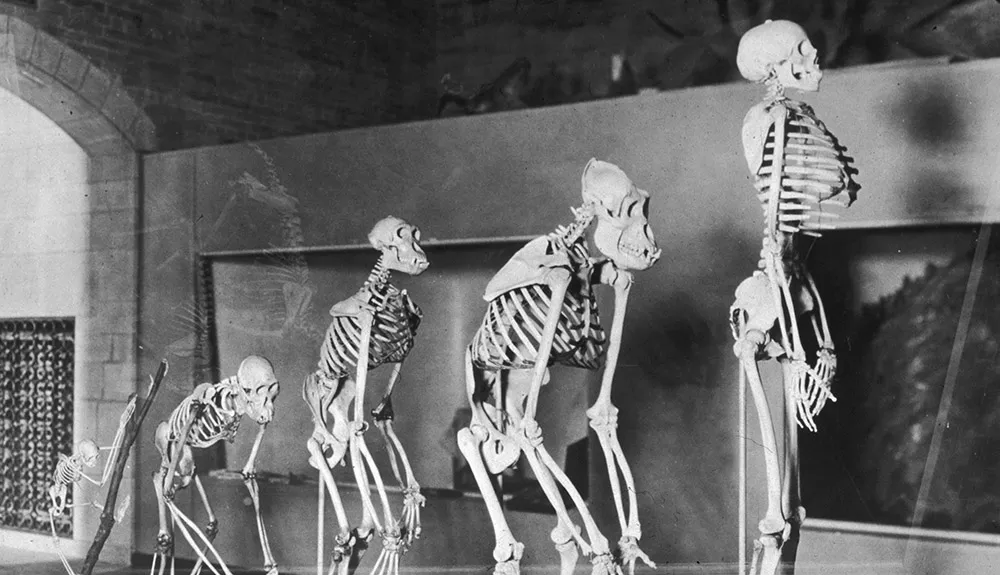
Over generations, the successful DNA sequences flourished and replicated, while the not-so-good DNA sequences were consigned to the evolutionary dustbin.
Life on Earth became increasingly varied and complex, with the most successful variants in each generation passing their genes on to the next. Charles Darwin described this as ‘natural selection’, long before DNA was discovered.
Read more about the discovery of DNA:
- How we unravelled the structure of DNA
- DNA: a timeline of discoveries
- Understanding DNA: the important figures who unravelled the helix
- Photo 51: the key discovery behind the structure of DNA
- DNA - five quick facts
What can we do with DNA?
We already use DNA for a range of immensely useful applications that can tell us about our past, present and future: what our ancestors were like, what medicines we should take or avoid, and what illnesses we may develop many years from now.
We can also use it to settle paternity disputes, or catch criminals, by searching for tiny amounts of DNA found at a crime scene.
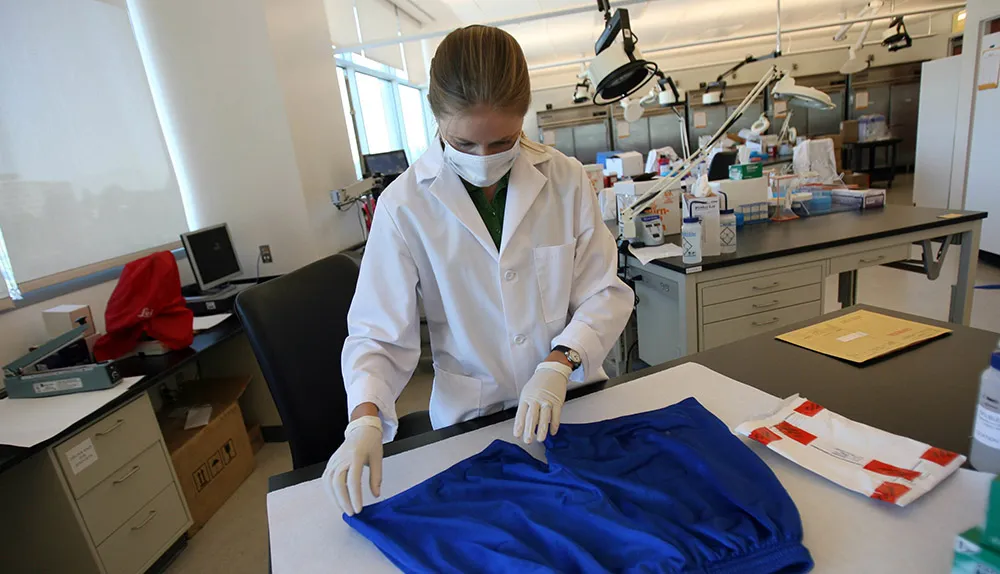
But that’s just the start. As DNA sequencing becomes vastly easier and cheaper, what was once unthinkable is now eminently possible. Already, scientists can create personalised medicines that are tailored to work with your exact combination of genes.
They are reading the genomes of cancer cells, in order to learn more about them and fight them. Gene therapy can be used to fight genetic disorders by inserting new genes into people’s DNA.
In the future, biologists may be able to create entirely new organisms that exist solely to produce useful products for us. We may even be able to edit the genome of our offspring – not only to guarantee our children are free from genetic disorders, but also to ensure they have the characteristics we want.